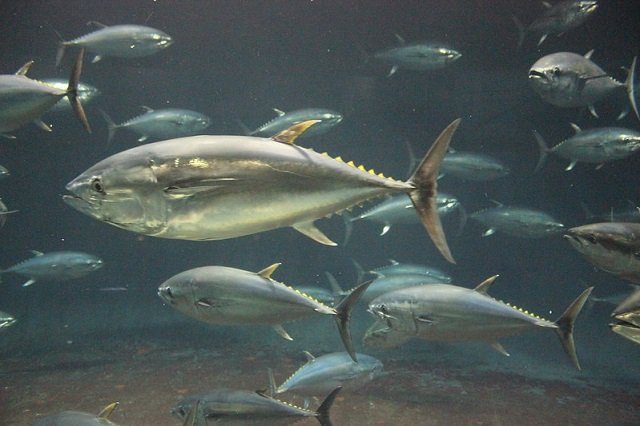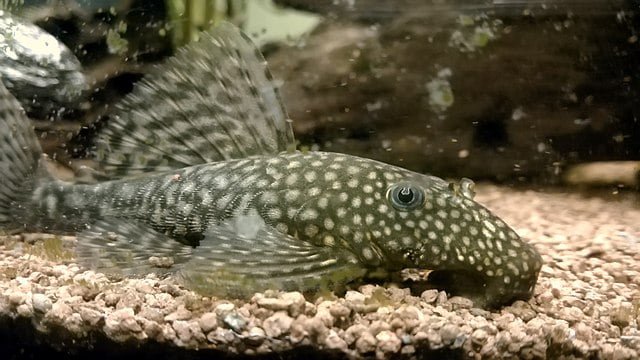Australia.- In relationships, “chemistry” is usually that “special something”, but Deakin chemists are on the brink of understanding the real chemistry of attraction in mussels. Surprisingly, this will have implications not only for aquaculture, but for animal husbandry and assisted human reproduction.
With his theory that sexual selection was unlikely to occur between rock-bound creatures like mussels, Charles Darwin under-estimated the power of chemistry.
Analytical chemist Associate Professor Xavier Conlan and PhD candidate Jake Penny are adapting nanoscale lab-on-a-chip technology to pin down the chemical signalling processes that allow mussels to sexually select “against the odds.”
Based within Deakin’s School of Life and Environmental Sciences, Associate Professor Conlan is working with colleagues from the University of Western Australia to investigate the chemical signalling that occurs between mussel sperm and eggs during spawning. The 36-month project is being funded by an Australian Research Council Discovery Award and aims to help protect mussels from climate change, improve aquaculture production and contribute to understandings of the chemical underpinnings of reproduction in all animals.
“Understanding the chemical processes in reproduction for these shellfish is likely to have widespread evolutionary study implications and applications for numerous taxa, including mammals, fish, amphibians, plants and many marine invertebrates,” said Associate Professor Conlan.
“Most people aren’t aware that much of our current knowledge about sperm in many animals has come from the study of marine invertebrates like mussels. It was only in the 1980s that, with the help of marine invertebrates, we discovered that most sperm don’t enter the oviduct in mammals. Only a few sperm respond to the chemical call. We call this chemotaxis.”
Stay Always Informed
Join our communities to instantly receive the most important news, reports, and analysis from the aquaculture industry.
Associate Professor Conlan explained that molluscs are “broadcast spawning” organisms like other sedentary marine invertebrates such as corals, sea squirts, star fish, sea urchins and sea cucumbers. Their breeding process is so useful to scientists because it is less straightforward than mammal reproduction and thus gives access to “many different interactions and useful chemical insights”.
Contrary to Darwin’s view that being rock-bound would make mussels unlikely to be sexually selective, modern scientists have discovered that sexual selection is much more than a matter of behaviour. It can even be influenced after mating by chemical or physiological factors.
Broadcast spawners face three main breeding challenges: turbulent ocean can quickly scatter their gametes (male and female cells that unite to form a fertilised egg); spawning is likely to occur during favourable tides for many species, so partnering with gametes of the same species is a challenge; and, finally, there is the challenge of finding the best mate from within their species.
Natural selection has solved the first two challenges. Chemical cues form a chemical “halo” around the egg and thus increase its effective size, so it’s easier to come into contact with sperm; and species-specific chemical profiles ensure same-species gametes are fertilised. However, scientists don’t understand how the third challenge is achieved – finding the best mate – yet they are optimistic that this is the key to improving commercial breeding outcomes and to progressing assisted human reproduction and animal breeding techniques.
“Until now, gaining a chemical understanding of this third process has been impossible due to the nature of mussels’ habitat,” said Associate Professor Conlan.
“It is hard to identify components in sea water because of the quantity of salt. But now, with lab-on-a-chip technology, we can research how mussel sperm and eggs select each other in sea water in the laboratory. We can observe one or a few sperm interacting with an egg and gain a mechanistic understanding of how specific sperm are guided to the gametes in broadcast spawners. ” said Xavier Conlan.
“Understanding the chemical processes in reproduction for these shellfish is likely to have widespread evolutionary study implications and applications for numerous taxa, including mammals, fish, amphibians, plants and many marine invertebrates,” said Associate Professor Conlan.
“Most people aren’t aware that much of our current knowledge about sperm in many animals has come from the study of marine invertebrates like mussels. It was only in the 1980s that, with the help of marine invertebrates, we discovered that most sperm don’t enter the oviduct in mammals. Only a few sperm respond to the chemical call. We call this chemotaxis.”
Associate Professor Conlan explained that molluscs are “broadcast spawning” organisms like other sedentary marine invertebrates such as corals, sea squirts, star fish, sea urchins and sea cucumbers. Their breeding process is so useful to scientists because it is less straightforward than mammal reproduction and thus gives access to “many different interactions and useful chemical insights”.
Contrary to Darwin’s view that being rock-bound would make mussels unlikely to be sexually selective, modern scientists have discovered that sexual selection is much more than a matter of behaviour. It can even be influenced after mating by chemical or physiological factors.
Broadcast spawners face three main breeding challenges: turbulent ocean can quickly scatter their gametes (male and female cells that unite to form a fertilised egg); spawning is likely to occur during favourable tides for many species, so partnering with gametes of the same species is a challenge; and, finally, there is the challenge of finding the best mate from within their species.
Natural selection has solved the first two challenges. Chemical cues form a chemical “halo” around the egg and thus increase its effective size, so it’s easier to come into contact with sperm; and species-specific chemical profiles ensure same-species gametes are fertilised. However, scientists don’t understand how the third challenge is achieved – finding the best mate – yet they are optimistic that this is the key to improving commercial breeding outcomes and to progressing assisted human reproduction and animal breeding techniques.
“Until now, gaining a chemical understanding of this third process has been impossible due to the nature of mussels’ habitat,” said Associate Professor Conlan.
“It is hard to identify components in sea water because of the quantity of salt. But now, with lab-on-a-chip technology, we can research how mussel sperm and eggs select each other in sea water in the laboratory. We can observe one or a few sperm interacting with an egg and gain a mechanistic understanding of how specific sperm are guided to the gametes in broadcast spawners. ”
Editor at the digital magazine AquaHoy. He holds a degree in Aquaculture Biology from the National University of Santa (UNS) and a Master’s degree in Science and Innovation Management from the Polytechnic University of Valencia, with postgraduate diplomas in Business Innovation and Innovation Management. He possesses extensive experience in the aquaculture and fisheries sector, having led the Fisheries Innovation Unit of the National Program for Innovation in Fisheries and Aquaculture (PNIPA). He has served as a senior consultant in technology watch, an innovation project formulator and advisor, and a lecturer at UNS. He is a member of the Peruvian College of Biologists and was recognized by the World Aquaculture Society (WAS) in 2016 for his contribution to aquaculture.




